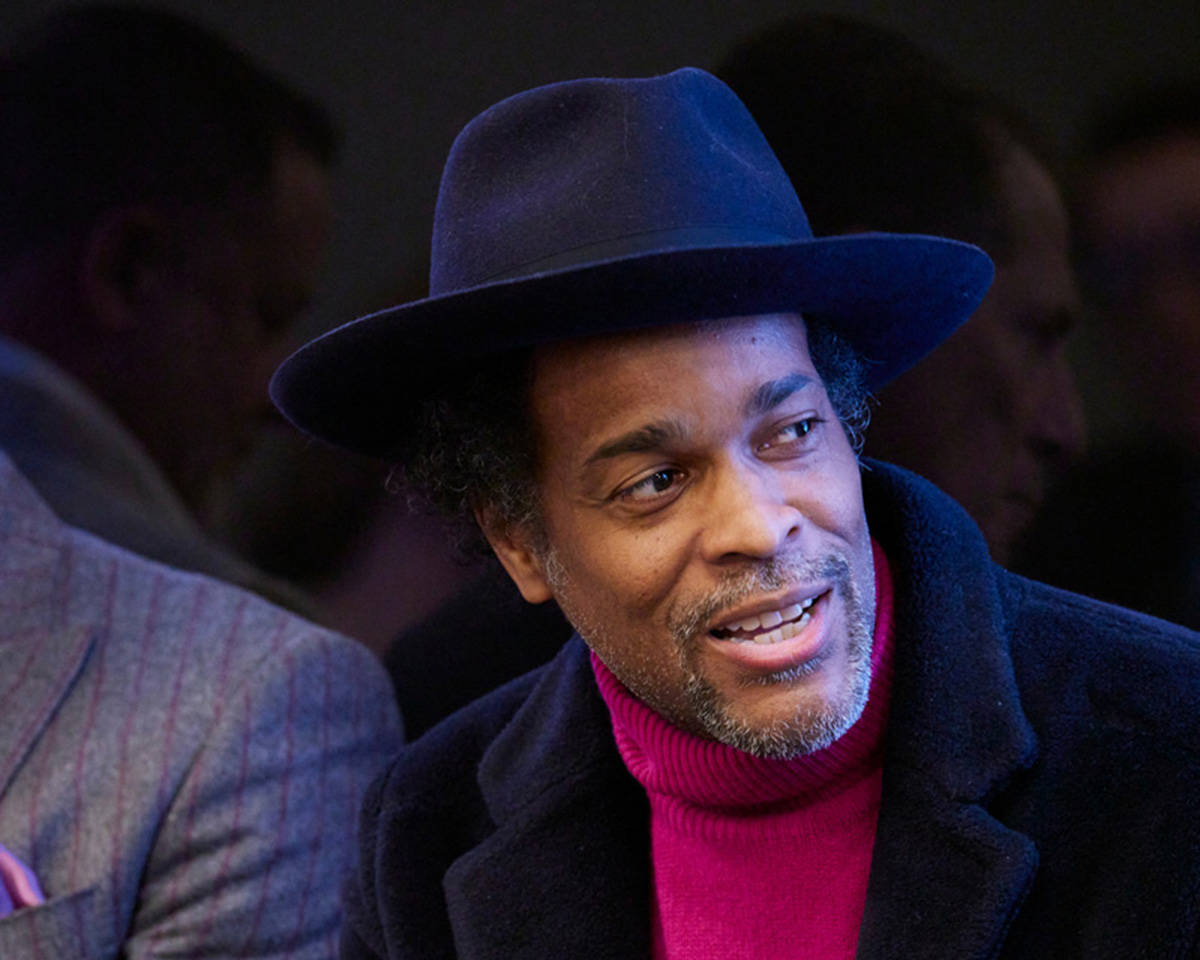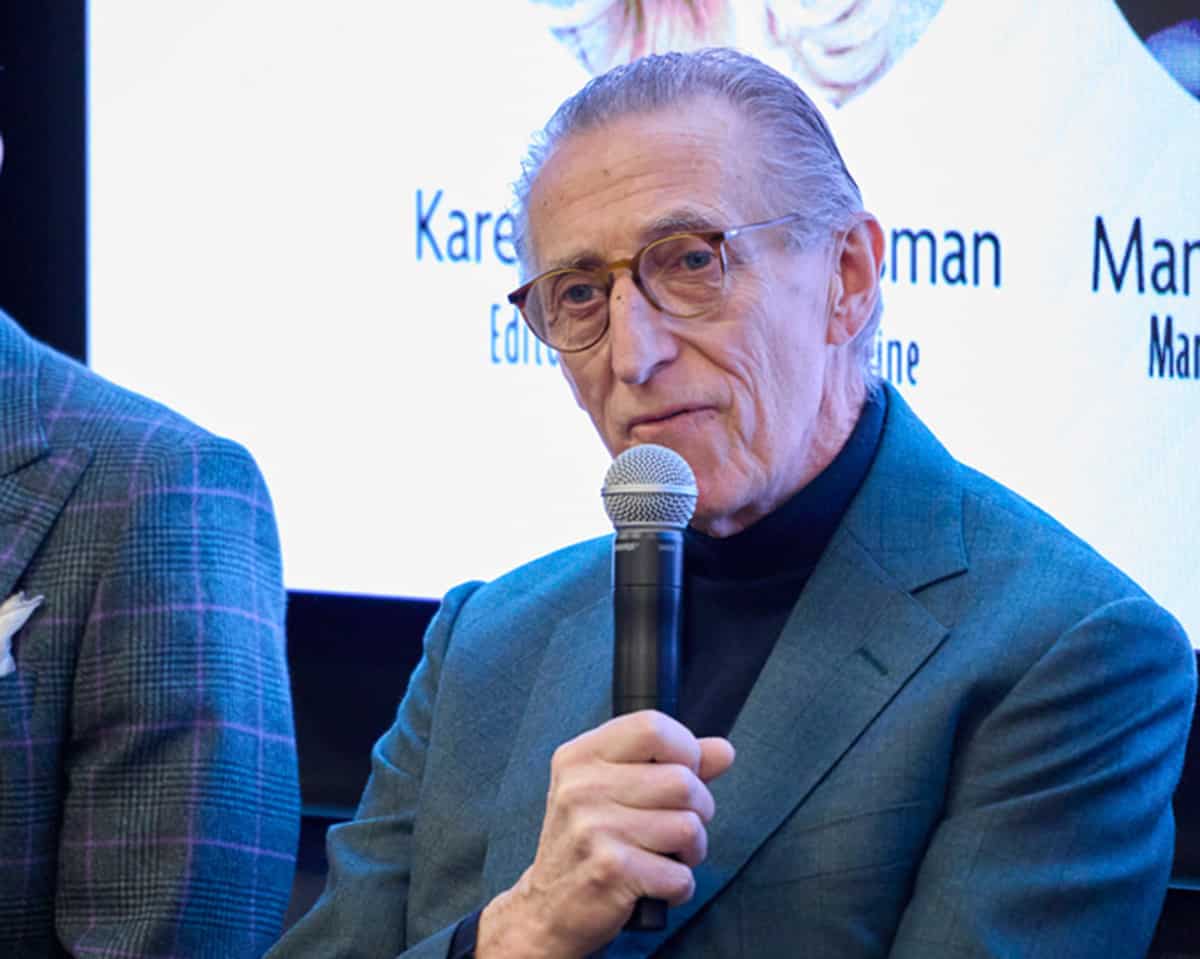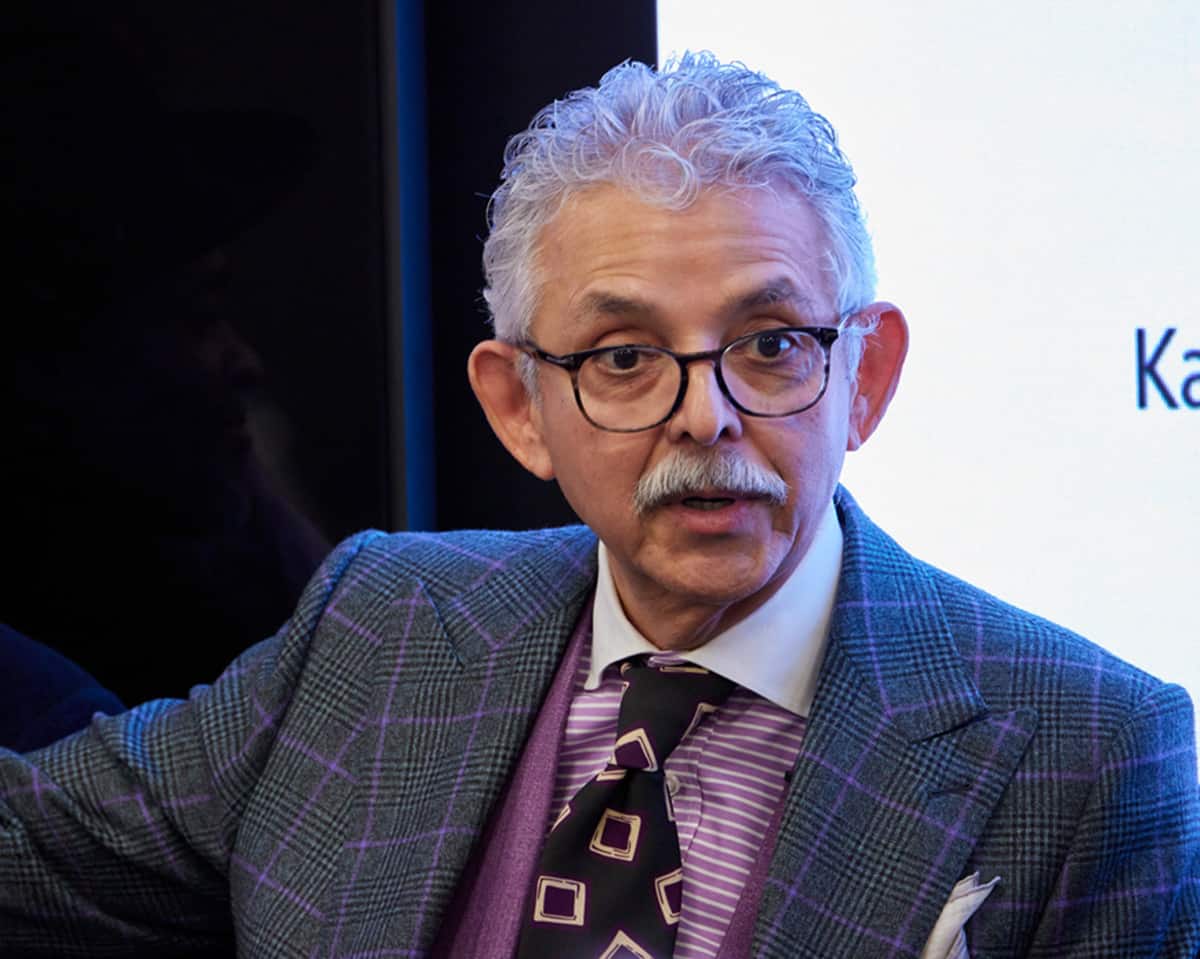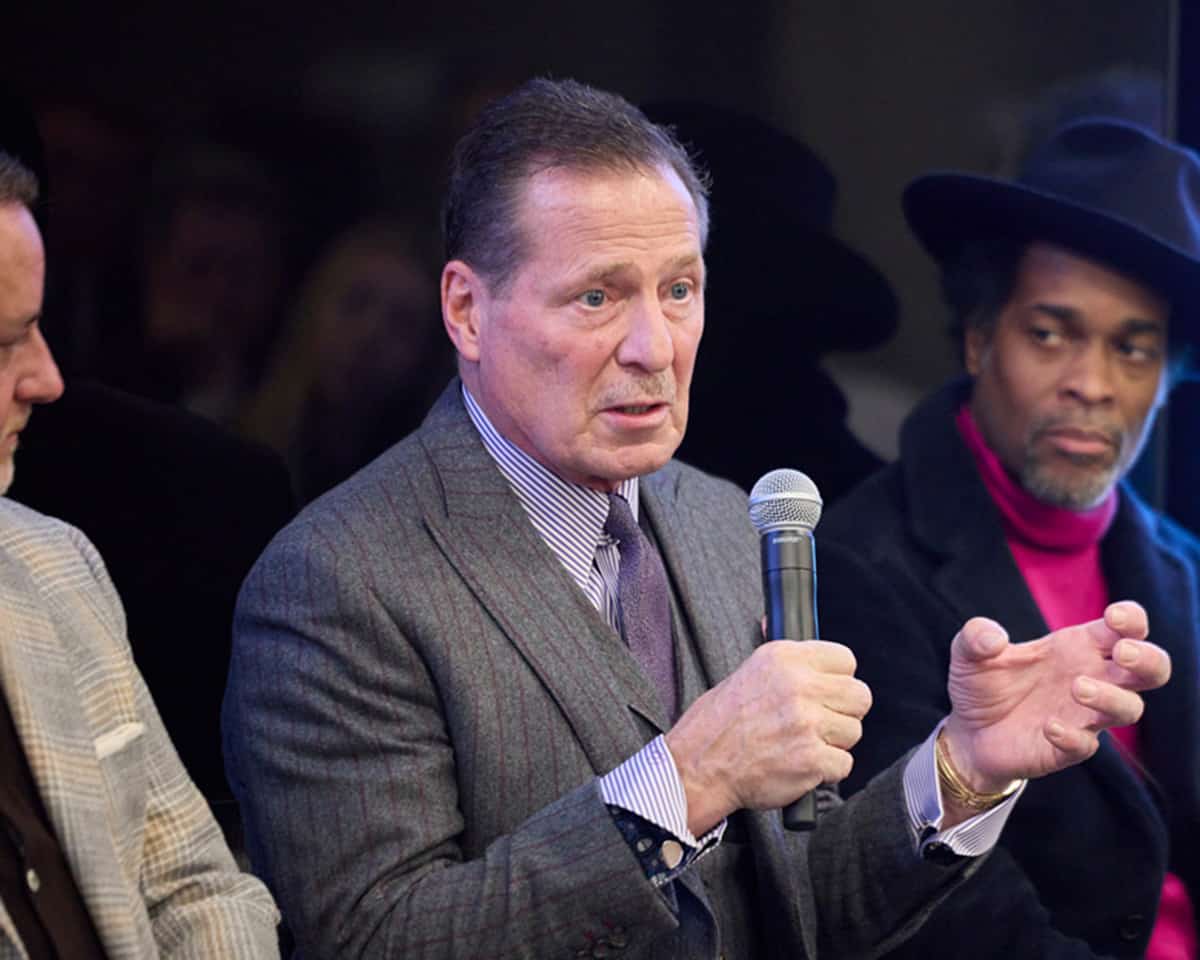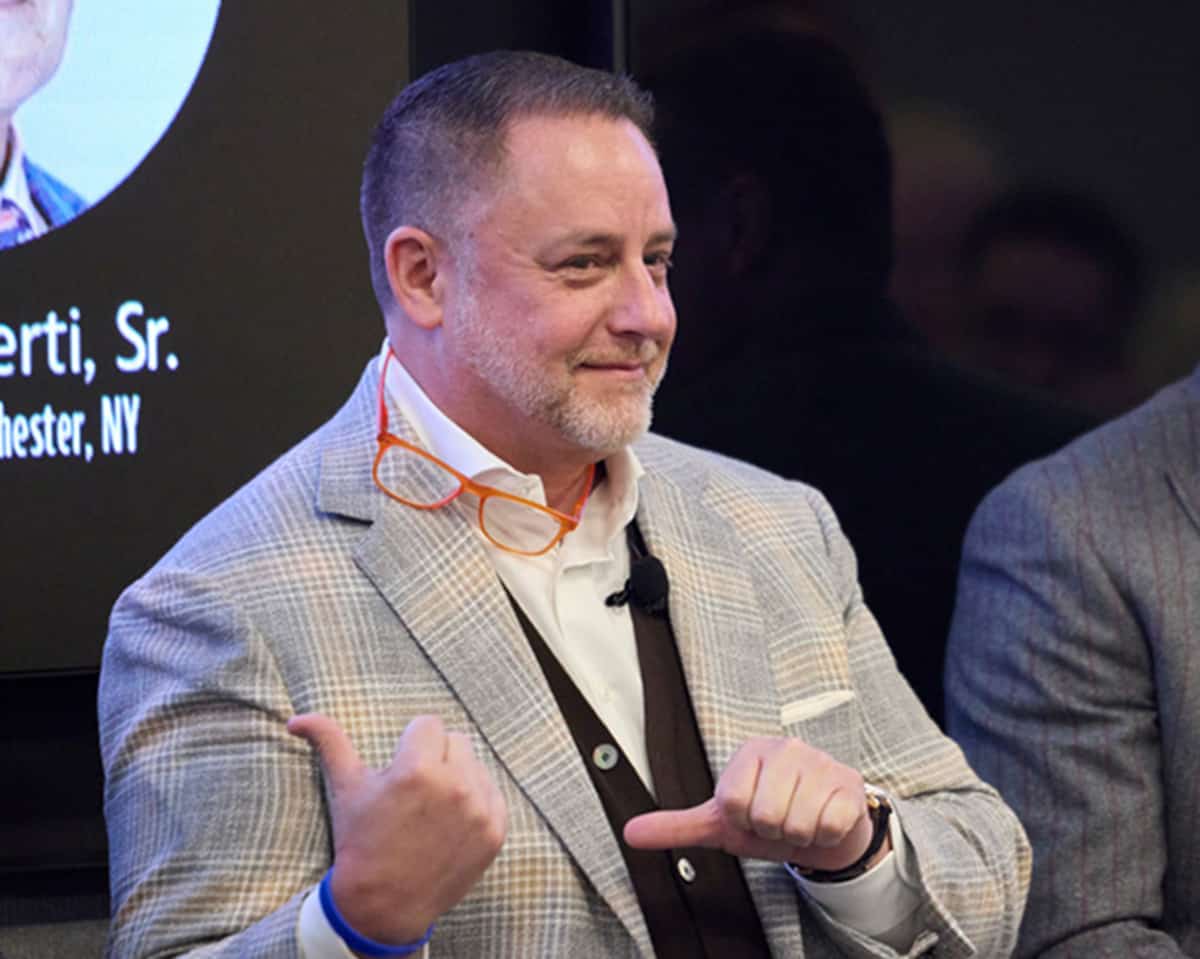HOW TO SELL LUXURY: A PANEL DISCUSSION BY GLADSON LTD
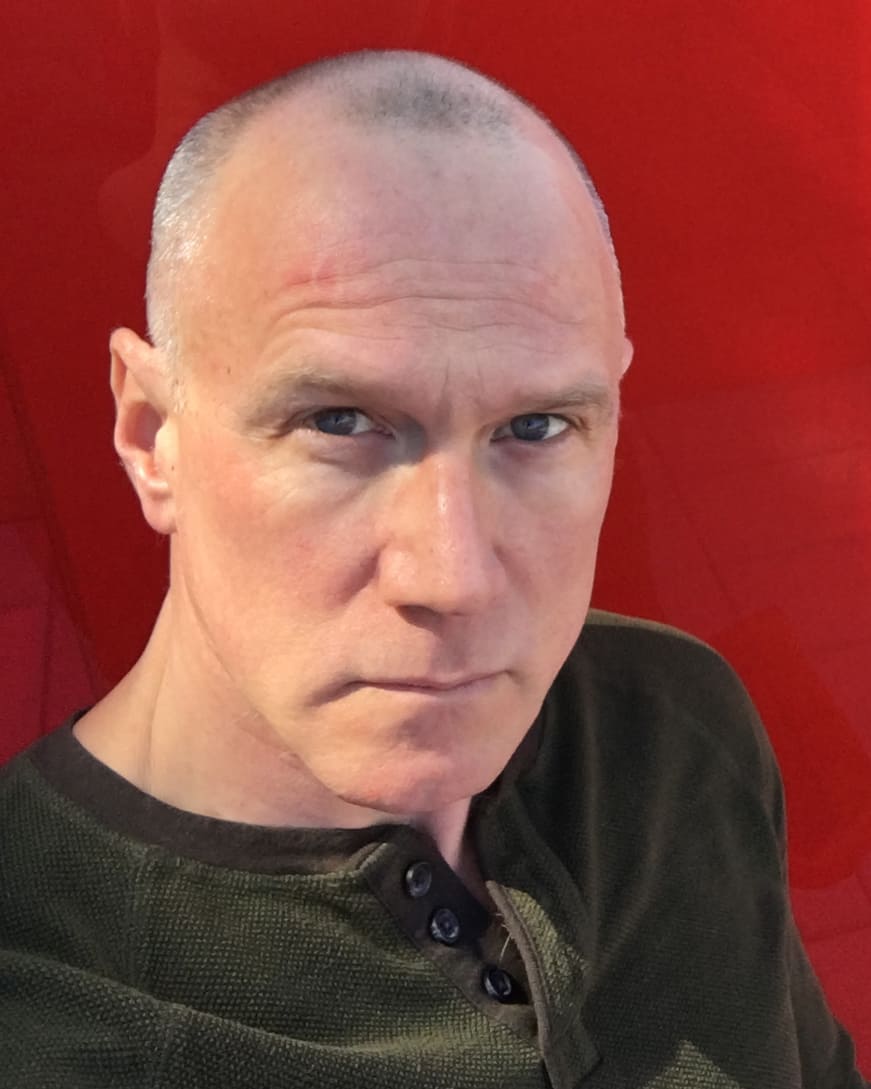
Luxury textile company Gladson Ltd. hosted the How to Sell Luxury panel discussion at the Merchandise Mart’s WorkLife conference center during the Chicago Collective on Monday, February 5, 2024. Gladson’s Guy Milinazzo welcomed more than 100 guests, then introduced the moderator, MR’s editor-in-chief, Karen Alberg Grossman, and each panelist. The speakers were Karl-Edwin Guerre, the editor-in-chief of No Chaser Magazine, as well as tailors Leonard Logsdail, Manuel Martinez, Peter Roberti Sr. and Peter Roberti Jr. of Adrian Jules, and Marc A. Streisand of Marc Allen Fine Clothiers.
Luxury by the numbers
Karen started the conversation by invoking three eye-opening statistics: The top 2% of luxury customers drive 40% of sales. Global luxury—meaning cars, homes, art, and sports—has grown 8% to 10%, yet clothing, beauty, jewelry, and watches have remained relatively flat. Finally, of high-end customers asked to project spending for 2024, 48% said that now is a good time to limit purchasing. With those challenging numbers in mind, she asked the panelists to weigh in on their approaches to engaging their luxury clientele.
Guerre
Guerre took the lead, emphasizing that “Luxury is an experience, not a product. That’s what our readers are looking for. For example, once, when I was in Italy, I watched an older gentleman sit down at a restaurant and take no less than four minutes folding and straightening his newspaper until it was just right. He ordered some pasta and a glass of wine and spent two hours eating his lunch alone. To me, that is luxury. It’s not necessarily about a high price point, but it is about the experience. Sure, the items we cover in No Chaser may be costly, but we’re here to tell the story behind them and explain why they cost that much. I think the most important thing is sharing those messages.”
Karen asked Guerre how he chooses what to pick for his fashion stories and, for example, pointed out father-and-son panelists Peter Roberti Sr. and Jr., mentioning how great each of them looked but that their styles were completely different.
“One of the things we do at No Chaser is unite communities of style. We shouldn’t spend so much time discussing what makes us different but what we have in common. Then we can have a great conversation. If you have style and appreciate the finer things in life, everybody can communicate and share the stories of all kinds of style.”
Leonard “Lenny” Logsdail
Lenny, originally from London, England, is a bespoke tailor, formerly of Savile Row, currently based in Manhattan, with a strong Hollywood following. Karen asked Lenny how he nurtures the sale and upsells his customers.
“I don’t really upsell. I charge a lot for my suits already, so it’s a given that it will be a luxury suit. If the customer tells me they want something a bit more luxurious, I’ll show it to them. I had a client in 1991 when I first moved to the United States. He came in with his secretary and proceeded to relay all of his conversation through her. He wouldn’t speak to me directly. He had so much money that he didn’t trust anyone.
“We finally built some trust, and he invited me to his home on a private island where he does a lot of traditional English shooting. He asked me to make him a shooting suit made of very soft, very expensive cashmere, but I warned him that it would look like a bag of rags in two years and that it was a waste of money. He agreed to pick a less expensive, more appropriate fabric, and now I’m one of the few people in the world that he calls directly. Everybody else goes through his secretary. To him, that is a luxury. It’s not that I upsell him; it’s the service I give and the integrity I offer.”
Manuel Martinez
Manuel is a custom clothier based in Baton Rouge, Louisiana, renowned for his mastery of color, pattern, and texture. Karen asked him to share his unique sales tactics.
“I have a passion for what I do. To me, dressing is an art. When I’m sitting with clients, I always try to listen first and then ask questions. You have to become a storyteller and establish some credibility. I show high-quality materials with high craftsmanship but in a very unique style. I use color and pattern to separate myself from the pack. I don’t consider myself a salesman. I consider myself a problem solver for my clients.”
Peter Roberti Sr. and Jr.
Karen then handed the mike over to Peter Sr., the owner of Adrian Jules Custom Clothiers in Rochester, New York, and his son, Peter Jr., who is a custom clothing designer with the company, as well as the president of the Custom Tailors and Designers Association.
Peter Jr. started, saying, “There are four components that we believe are imperative in selling luxury goods: passion, conviction, confidence, and being obsessed. Passion is essential, but it will only get you so far. You must be obsessed with your craft if you want to get to the next level, from selling $3,000 to $5,000 sportcoats to selling $25,000 jackets and $40,000 suits. Visit the mills! If you want to sell that top-tier, you must know everything there is to know about the fabric.”
Peter Sr. brought up vicuna as an example: “The animal has to run wild. You have to catch it, shear the fur from a specific place on the animal, and then let it go because if the animal gets too nervous, it affects the quality of the fiber. That becomes a story to share with your clients.”
He went on to talk about the importance of explaining fine construction details to clients. “You have to understand what is behind the fabric and the linings. Go to your manufacturers and find out how they make the garments so you have your stories and can believe in your product.”
Marc A. Streisand
Marc started out as a personal clothier in the mid-price range. He’d walk into office buildings, knock on doors, and ask the receptionists or assistants who the best-dressed guy in the office was, saying that he was there to save him time and money—an approach he realized later was a mistake. “It’s need vs. want. I don’t have anything that anyone needs. Nobody needs to come to my store and spend $5,000 on a sports jacket. But, boy, do they want to!”
After apprenticing with a tailor, Marc eventually bought a Rhode Island store with three master tailors on staff. From there, he traveled to Italian factories to learn about handmade manufacturing processes and incorporate them into his product. Now, his customers come to him because they can have a vastly different experience than going to a regular store.
The session was then opened up for questions from the floor, which included inquiries about what was most important to luxury clients (knowing when to talk and when to listen, knowing the product, building trust, and being a bit of a psychologist), how to break into the higher-end part of the business (live in the luxury environment, participate in their charities, go the extra mile, and create your story on social media), and whether events are helpful (yes, but not necessarily focused on clothing: food, cars, jewelry, and ladies clothing—to attract spouses—with a focus on giving back to the community, seem to work best).
Go to YouTube to experience the entire event, and thank you to Gladson for sponsoring such a unique, thought-provoking discussion.
All photos courtesy of Gladson, by Jeff Schear Visuals.





